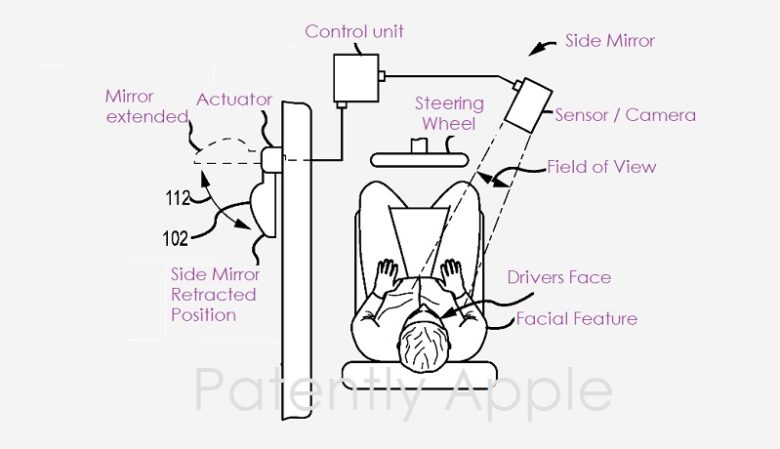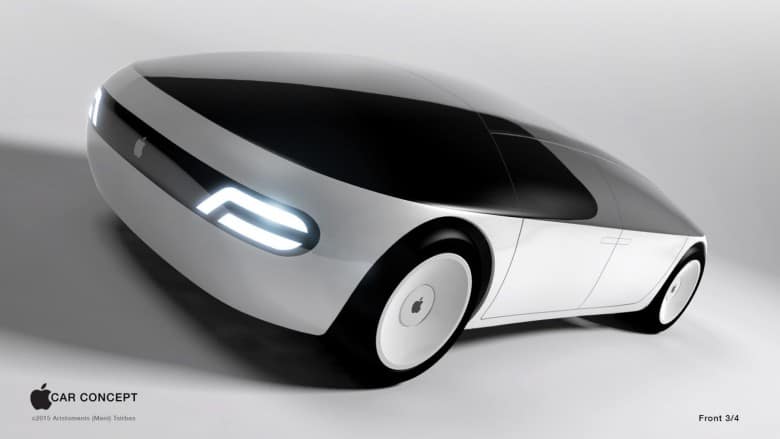Currently, drivers only have the rearview and side mirrors of a car to let them know what’s going on behind them. But a new Apple invention describes an upgrade — that may eliminate blind spots by projecting mirrored images of the surrounding environment onto the window or windshield.
This could give the driver more contextual information about their surroundings, depending on where they are.
A patent covering this invention describes how this could be based on a camera reading the drivers face. That would enable the system to know when to have the mirror in retracted or extended modes.
As far as I can tell, the concept would essentially be to come up with a way of smartly controlling the side mirrors from inside the car, possibly via facial expressions. This would offer a way to present information to drivers without diverting their attention from the road ahead.

Photo: Patently Apple
This could possibly allow for some intelligent analysis of the images, too. For instance, it could use a proximity sensor to work out the distance to surrounding objects. This proximity sensor could involve lidar, radar, or a variety of other alternatives.
Apple Car could solve blind spots
It definitely sounds interesting — although presumably more useful if the Apple Car was in driver mode, rather than autonomous mode. However, it’s certainly in keeping with Apple’s more safety-oriented technologies, such as the iOS feature which stops drivers receiving notifications while behind the wheel.
A number of companies have explored the use of facial recognition in cars. Usually these applications are intended to spot drowsiness or other distracted behaviors in drivers. It’s not quite clear how this could be used as a way of consciously controlling car features. But it certainly shows that Apple has some interesting automotive ideas up its sleeves.
Apple’s car project has been in the works for around half a decade. But despite hiring a number of employees and filing plenty of patents, Apple has given very little indication of what it’s building.
Source: Patently Apple


